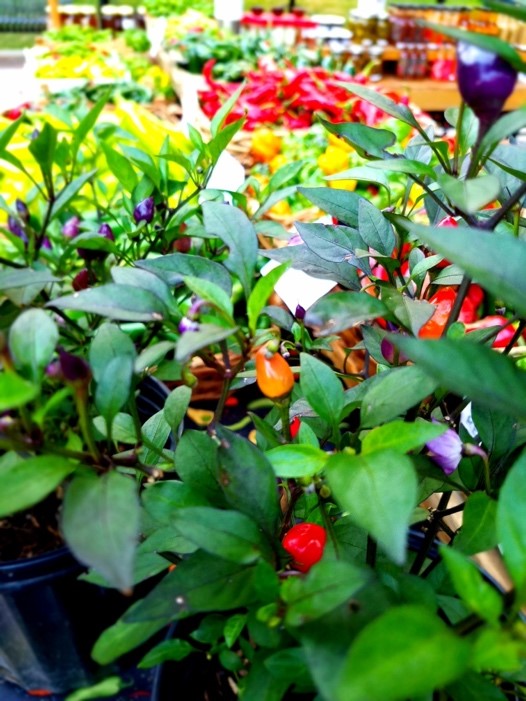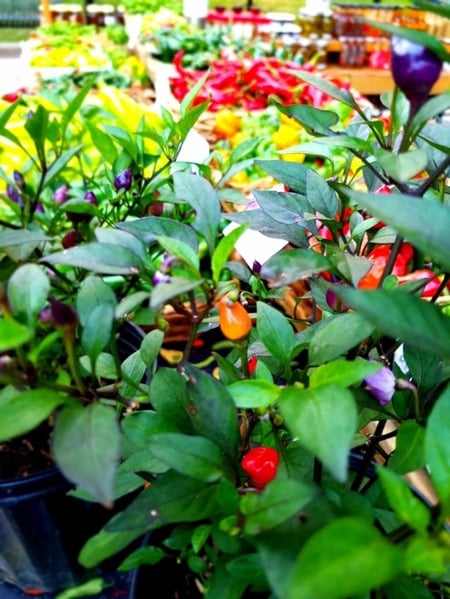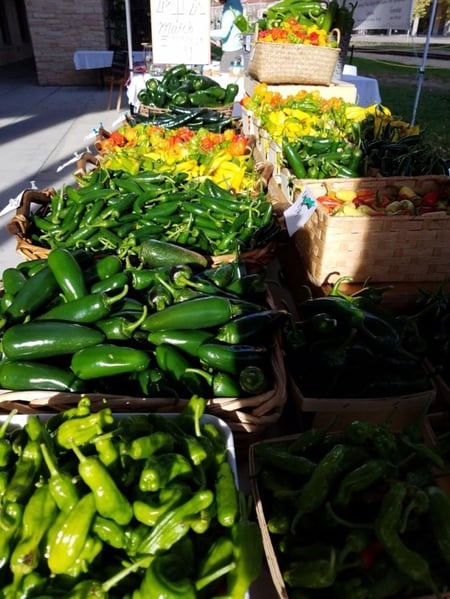
Whether it’s watching tears being shed during a Hot Ones video or desperately fanning your mouth yourself, we all have what I like to call “spice memories.” Most of mine happen to take place on the chili pepper farm and business that I worked at in Wisconsin (I admittedly was the instigator of one poor lad’s severe “spice memory” from eating a ghost pepper; he’s alive and well, don’t worry). However, despite what many people think, not all chilis are supremely spicy; some provide a subtle warmth at the back of the throat, others a quick, citrusy spark, and still others a berry-flavored bite that only hits 30 seconds later.
Chilis have flavor; they complement so many other ingredients and can uplift dishes. If you want a step-by-step example of how to do this, join us for our virtual jerk chicken class on Saturday, July 24 at 6pm CST.

Chili Pepper Basics
First off, we can thank capsaicin, a chemical component in chilies, for the burning sensation that takes over. Capsaicin is produced in the lighter-colored membranes inside the pepper that hold the seeds (not the seeds themselves like many people think). While it’s easy to think of this heat as a taste, capsaicin actually triggers thermal (think temperature) receptors in your mouth, not your taste buds. So, the way you recognize that a bowl of soup is too hot to eat is the same way that you recognize spice from a chili pepper. Therefore, if you want the flavor of the pepper, but less heat, you can remove more of the seeds/membranes!
Capsaicin also triggers the body’s pain receptors, specifically the TRPV-1 receptor, and proceeds to overwhelm it in a sense so that after the initial “pain,” the TRPV-1 receptor is full and can’t be triggered right away again (this is why our mouths start to feel a little numb or immune to more spice after a while). At this point, you might be looking for something to drink. It’s true that milk (or dairy) is better than water since capsaicin is fat-soluble, meaning it dissolves into the milk or dairy fat. But before you put yourself in that situation, you might want to ask: how hot is this pepper?
Scoville Units
The Scoville scale, named after American pharmacologist Wilbur Scoville, was invented in 1912 to rate the degree of pungency of fruit in the Capsicum genus (which includes peppers and chilis). A chili’s Scoville rating was determined by diluting a sample of the chili in water repeatedly until the test subject could no longer feel heat (yikes). Fortunately for us in the 21st century, these ratings are now determined with high-performance liquid chromatography (HPLC) to recognize the concentration of capsaicinoids in a chili. This is translated into a chili’s Scoville Heat Units (SHU) value. For example, a bell pepper measures 0 SHU (not spicy at all), a jalapeno at 40,000-50,000 SHU, and the world’s hottest chili, the Carolina Reaper, at 1.5 million-2.2 million SHU.
 Image courtesy of scovillescale.org
Image courtesy of scovillescale.org
Health Benefits of Chilis
Chilis, as with all fruits and vegetables, are proven to be beneficial to our health. First off, they contain very little calories, which is a plus for when you’re looking to add flavor to your food without adding butter, salt or sugar. Second, they contain significant amounts of vitamins B6 and C, which support a healthy immune system, metabolism, and our body’s production of collagen. Third, they contain hundreds of phytochemicals which are compounds found in plants that are shown to have many benefits, such as having anti-cancer properties.
There are also studies that suggest chilis increase our resting energy expenditure (the number of calories our bodies burn even if we’re just sitting to function). However, before you get weight loss plans in your head, remember you’d have to eat a lot of chilis, which could have dangerous or unintended health consequences, in order to significantly alter any body composition. But don’t fret, incorporating a small amount of chilis actually follows the healthiest lifestyle: eating a variety of whole foods every day.
 Now, the beauty of chilis is that they’re more than just heat. Dry spice rubs are great to add to proteins or roasted vegetables, fresh chilies are great for making jams or adding to marinades, and there’s a whole sleuth of hot sauces that you can add a drop or two on your morning eggs to get you started. Savory Accents, a chili farm and business, grows over 30 varieties and makes products with them such as their spicy hummus, candied jalapenos, and dry spice blends! Experiment, find a chili that works for you, and make some spice memories.
Now, the beauty of chilis is that they’re more than just heat. Dry spice rubs are great to add to proteins or roasted vegetables, fresh chilies are great for making jams or adding to marinades, and there’s a whole sleuth of hot sauces that you can add a drop or two on your morning eggs to get you started. Savory Accents, a chili farm and business, grows over 30 varieties and makes products with them such as their spicy hummus, candied jalapenos, and dry spice blends! Experiment, find a chili that works for you, and make some spice memories.

